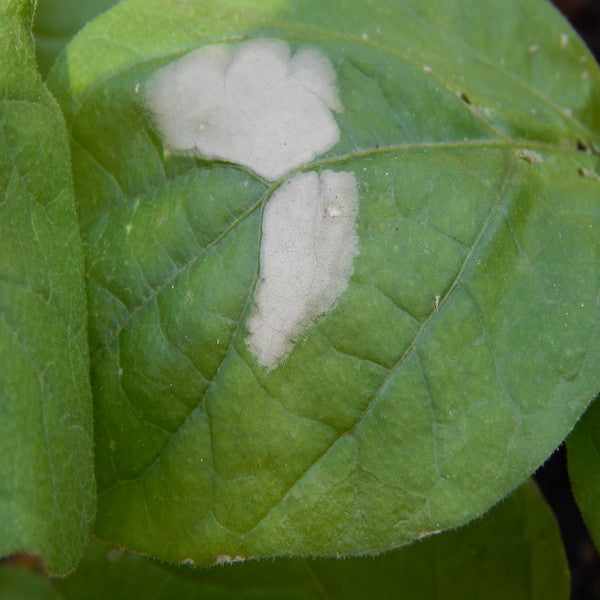How to Heal and Protect Your Plants From Sunscald
•Posted on July 03 2020

Plants thrive on sunlight, but the wrong kind of sunlight can have a negative effect on your vines, garden plants, and newly planted trees.
Many plants are susceptible to a condition called sunscald, which can damage or even kill your young garden or trees.
Read more to learn about this condition and how to prevent it.
What is Sunscald?

Sunscald is comparable to a sunburn on your skin. Younger trees, those newly planted, and species of trees with thin bark are the most susceptible.
Once sunscald occurs, the tree begins to crack at the bark level and beneath. This dries out the tree causing pine needles or leaves to discolor, turn brown, and fall off.
In leafy plants, the leaves often turn pale yellow or white in color.
Without a sufficient amount of leaves, the tree and plant is unable to nourish itself so you'll want to remedy the situation as quickly as possible.
How Do Plants Get Sunscald?
Generally, when tender parts of a plant are exposed to harsh, direct sunlight, for a long time, the plant becomes damaged.
The outer layers of the leaf tissue burn up, blister and discolor.
Although you may think Spring and Summer are the only times plants can get sun scald because of increased sunlight, this condition can occur in the winter too.
On sunny winter days, the bark temperature of the tree can increase to more than 20 degrees higher than the air temperature.
This brings the tree out of dormancy (the tree thinks it's spring) and becomes active.

However, when the sun is blocked, the shadows or nightfall cause the bark temperature to rapidly drop to near-zero temperatures.
This fluctuation and rapid temperature drop kills the active tissue in the tree before it can return to dormancy.
Fruit trees and vines are also susceptible to sunscald due to excess pruning. For leafy plants, such as tomatoes, peppers, and berries, the plants may be susceptible to sunscald if the ground freezes their roots and they're unable to get adequate water.
You'll notice that your plants have blisters on the leaves that resemble sunburn blisters on a person.
Too many, and the leaves can't work properly, denying your plants enough nutrition.
What Are Some Ways to Repair Plant Health After Sunscald?

One way to repair sun scald damage in trees is to cut the dead bark away until you reach live layers. Then, wrap the tree until it's larger or more established.
For vines and other plants, consider placing netting over the them until the tender growth has grown back.
You can help garden plants revive their health by placing a thick layer of mulch over the garden beds, helping to preserve the heat in the ground.
You may also wish to cover them or prevent direct hot afternoon sun to allow the leaves to naturally heal.
How Can You Prevent Sunscald?
For Trees

Prevent sunscald, or "tree sunburn," by wrapping the trunks. Light-colored commercial tree wrap works best, as darker colors can absorb too much heat.
The light-colored wrap reflects the sun and keeps the bark at a more consistent constant temperature.
Wrap from the ground up using an overlapping, swirling thing until you reach the first branch. Take the wrap off in early spring, but wait till after the last frost.
Newly planted trees need to be wrapped for at least two winters, while thinner-barked types of trees need at least five years of winter wraps – or more if they take longer to be established.
For Plants/Produce

Needless to say, the easiest way to prevent sun scald in plants is to only place your plants in the sun for the amount of time they need to soak up the sun and not a minute longer than that.
This will require you to be extra vigilant and remain consistent with how many hours per day they're in the sun.
For plants in containers, be sure to move them in and out of the sun accordingly and keep in mind that indirect sunlight is your best friend.
Meanwhile, for gardens that are static, like garden beds, covering the beds with a canopy or any type of shade when sunlight becomes too harsh, will do wonders for your garden's health.
Help Your Plants Thrive

Working hard to prevent sunscald is the first step to caring for a beautiful greenscape.
Boost the overall health and longevity of your plants and trees using a heavy metal-free, water-soluble fertilizer from our collection that is perfectly formulated for different types of plants and soil.
Shop below to discover the options available for your home and garden.
Related Posts:
Comments
0 Comments
Leave a Comment